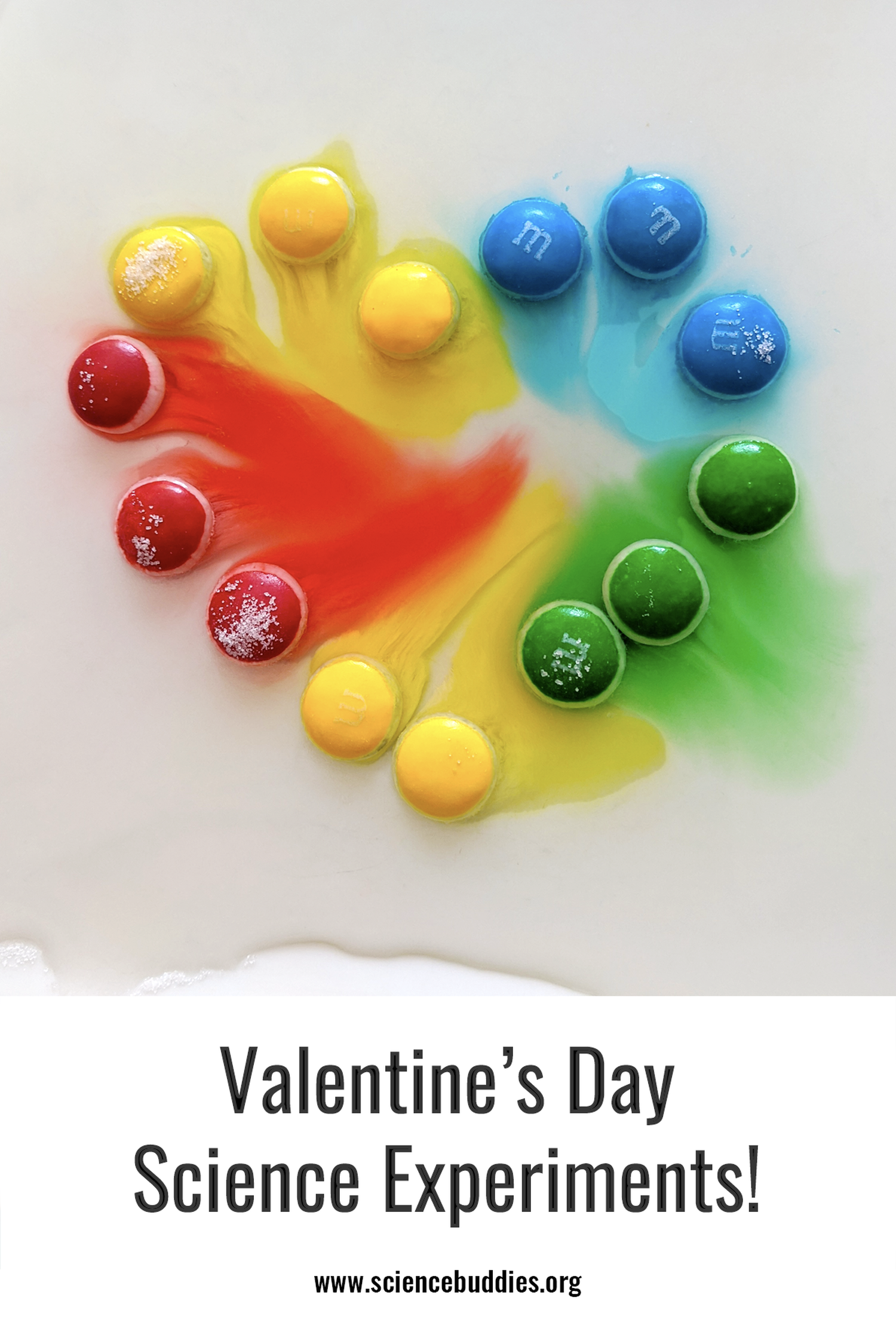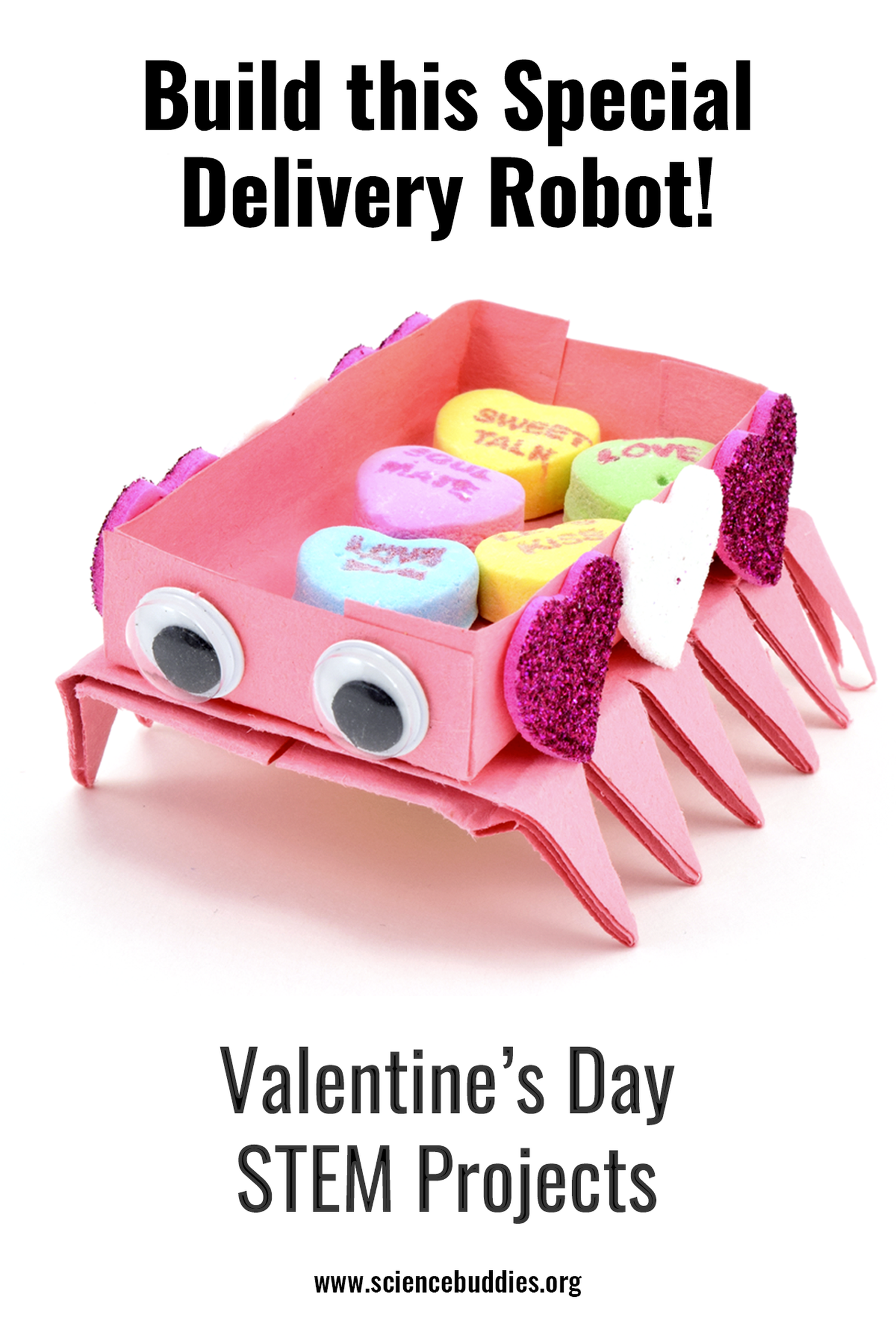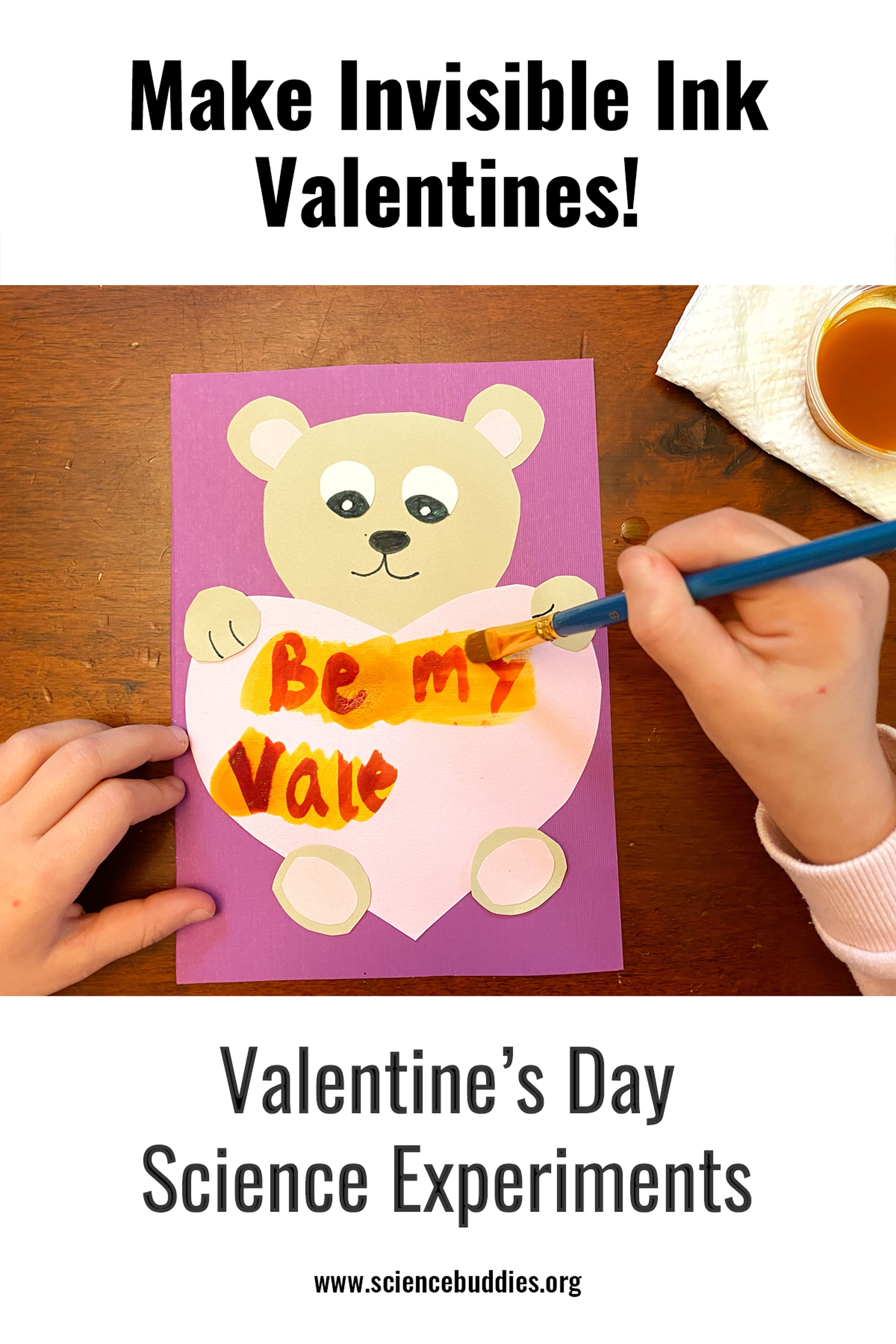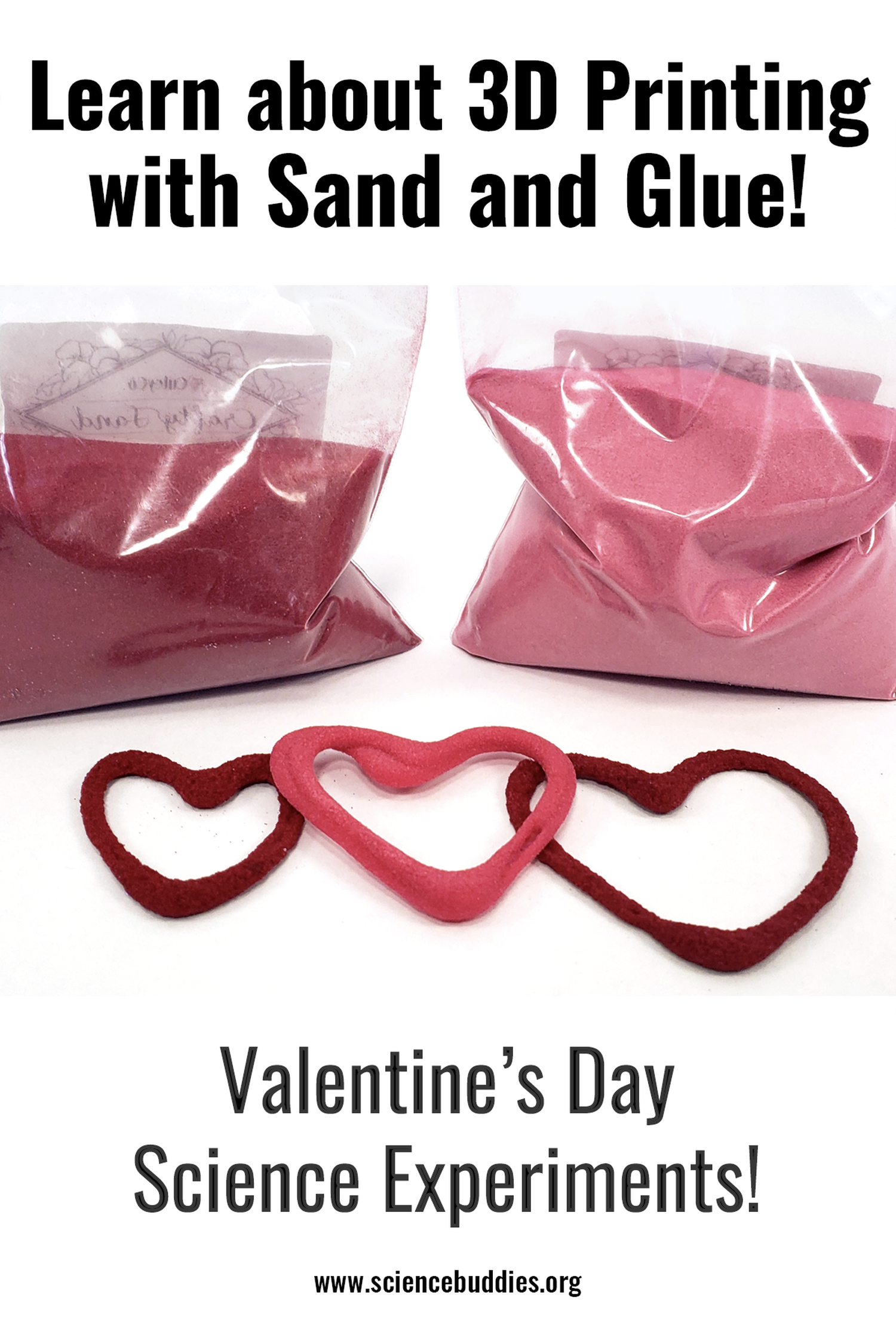12 Valentine's Day STEM Activities
Give student science and engineering activities a creative Valentine's Day twist with these 12 free STEM projects, from paper circuit Valentines to invisible ink messages and dancing candy hearts!
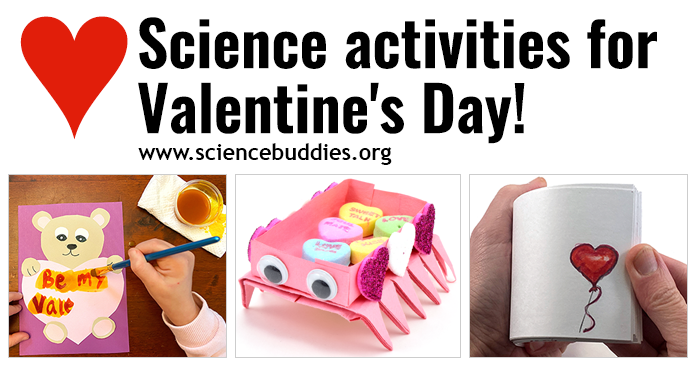
Be My STEM Valentine
With a bit of creative thinking, it's easy to give favorite STEM activities a new spin and irresistible Valentine's Day flair. See our suggestions below for an assortment of science and engineering activities that can be done with Valentine's Day in mind. From Valentine's Day cards written in invisible ink to a special delivery robot or a clever Rube Goldberg machine, these ideas are great for using science to create something unique.
Note: Science Buddies Lesson Plans contain materials to support educators leading hands-on STEM learning with students. Lesson Plans offer NGSS alignment, contain background materials to boost teacher confidence, even in areas that may be new to them, and include supplemental resources like worksheets, videos, discussion questions, and assessment materials. Activities are simplified explorations that can be used in the classroom or in informal learning environments.
Lesson Plans and Activities for Valentine's Day STEM
1. Marbled Valentines
With the Make Marbled Cards Using Science! activity, students learn about hydrophobic and hydrophilic substances and use shaving cream and food coloring to make colorful marbled art! They can make individual cards or cut their marbled sheets into smaller cards or bookmarks. To add a Valentine's message or heart, students might experiment with a crayon wax resist on the paper before pressing it to the marbling mixture. (For extra tips, see how this family explored paper marbling at home!)
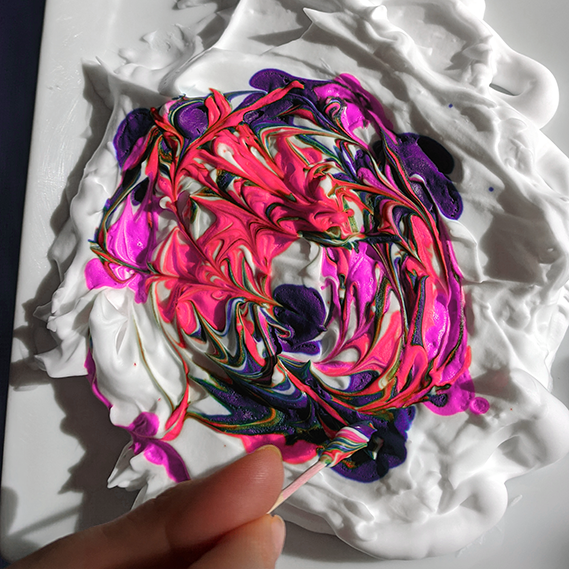
2. Special Delivery Robot
Using directions to make a simple Junkbot or Brushbot, students can get creative with themed robots like this cute Special Delivery Robot. What other kinds of legs or wheels might work for this robot? (Note: for family-friendly introductory robotics exploration, see the Junkbot, Bristlebot, and Brushbot activities.)
3. Rube Goldberg Machine
Rube Goldberg machines are machines that use a complex set of chain reactions to accomplish a simple task. In the Study Kinetic Energy with a Rube Goldberg Machine lesson, students learn more about potential energy and then design and test their own Rube Goldberg machine. Students can get creative in brainstorming and designing a machine to perform a specific task. Our Valentine's Day-inspired machine shows how this concept can easily be connected to a holiday or other theme. Reminder: be prepared that it takes time to test and retest to get each step in the series to work. Once it's time for the final run, don't forget to take a video!
4. A Flipbook Valentine
Making homemade Valentine's Day Cards is a classic approach to celebrating the day. In the Apparent Motion in Flipbooks activity, students make simple flip books from index cards. With attention to the placement of a small illustration on each page, the story will appear to be in motion as the book is flipped. This would be a really fun approach to making a special Valentine's Day card! (Tip! For more creative science and engineering ideas, see our Storytelling STEM collection.)
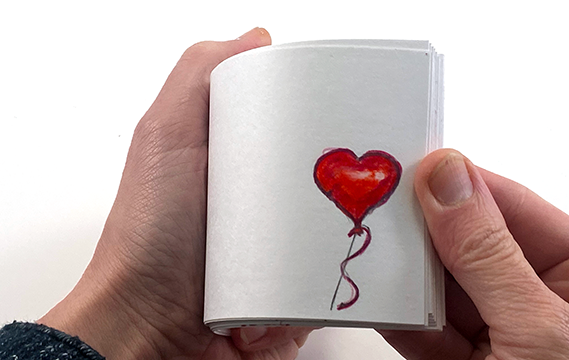
5. Invisible Ink Valentines
A blank Valentine's Day card? With a small instruction explaining how to reveal the message, a Valentine's Day card written in invisible ink would be a very clever twist on traditional cards and a lot of fun! The Secret Messages With Invisible Ink! activity has all the information to help students make and reveal their own invisible ink.
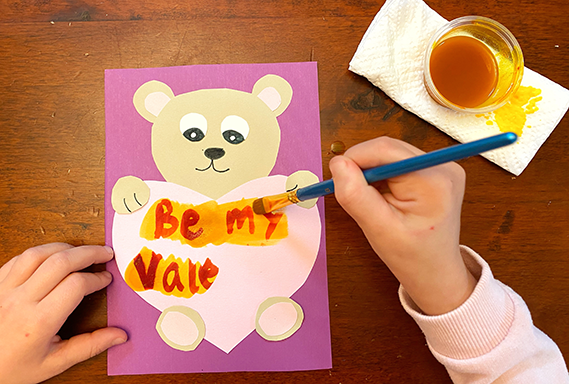
6. Candy Gears
The Gear Up Your Candy activity is an innovative way to explore the mechanics of gears. To connect with Valentine's Day, use gummy "Dots" candies in Valentine's Day colors and an assortment of recycled lids. Students could even decorate the tops of the lids with paper or construction paper circles that have Valentine's Day motifs or sayings. How many lids can students connect so that when one is turned, they all spin? Do they all go the same direction? Why or why not?
7. 3D Print Heart Shapes with Sand and Glue
Make heart-themed sculptures while learning about 3D printing! Simulate the additive process of 3D printing using sand and glue. No 3D printer is needed for this experiment! (Be inspired! For a rainbow spin on this activity, see the example in our 7 Rainbow Experiments for Science Class post.)
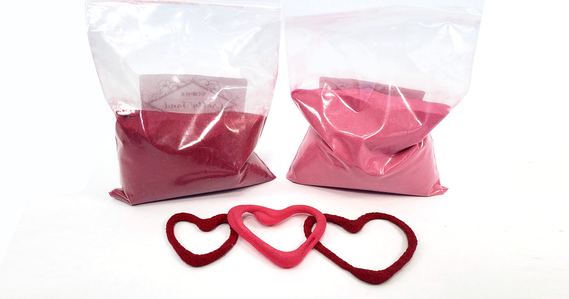
8. Light-up Valentines
This activity requires a few extra materials. While you wouldn't want to have to make enough of these cards to pass out to an entire class, for one "special" card or general Valentine's Day greeting, the Make a Paper Circuit activity is a great way to explore circuits and make something very cool and interactive — it lights up when you press to complete the circuit.
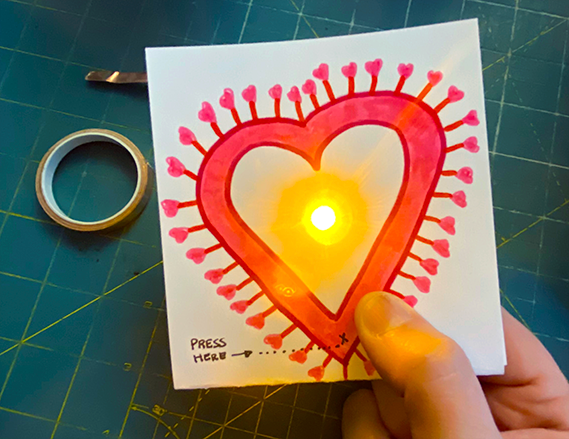
9. Geodesic Dome
Use regular gumdrop candies or a bag of Valentine's Day candies (like Sour Punch Hearts or another gummy option) with the Build a Gumdrop Geodesic Dome activity to build geodesic domes and experiment to find out how much weight a dome can hold.
10. Candy Diffusion
In the Candy Rainbow activity, students use the power of diffusion to make colorful patterns when they line up candies and add water. What role might adding table sugar play in the resulting designs? Put it to the test! (Tip! See how things went when this family did this activity at home.)
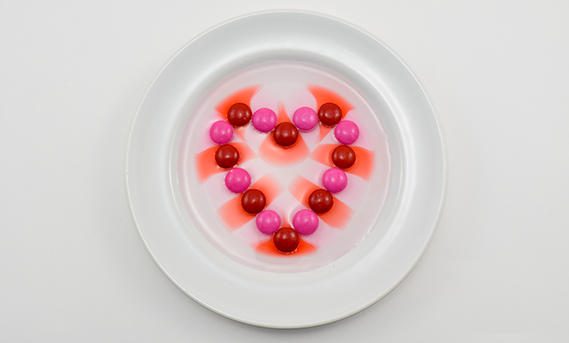
11. Dancing Candy Hearts
In the Dancing Candy Hearts activity, students use a glass of carbonated water or soda to learn more about the science behind carbonation, density, and buoyancy while watching candy hearts slowly rise and fall in a mesmerizing candy dance. The dance will end when what happens? What controls the speed of the rising and falling of the candies?
12. A Spinning Thaumatrope
Making a paper thaumatrope with Valentine's Day in mind gives an exciting February "twist" to this classic STEM toy. With a simple illustration on each side, can your students create a Valentine's Day-inspired "animation" that appears when the thaumatrope spins?
Think Creatively!
The suggestions above are all ways to do hands-on STEM that teaches and reinforces science and engineering learning while also being fun and fitting in with the excitement of Valentine's Day. There are many other projects, activities, and lessons you could adapt to have Valentine's Day flair. If you can use materials that are in Valentine's Day colors, you can easily cast the exploration as "perfect for February." You'll be accomplishing your curriculum goals, and your students will think they got to do something "fun" for Valentine's Day. It's a win-win!
More STEM Calendar Connections
Discover other creative STEM tie-ins on our STEM Calendar for Educators: Month by Month STEM Projects.
Thematic Collections
Collections like this help educators find themed activities in a specific subject area or discover activities and lessons that meet a curriculum need. We hope these collections make it convenient for teachers to browse related lessons and activities. For other collections, see the Teaching Science Units and Thematic Collections lists. We encourage you to browse the complete STEM Activities for Kids and Lesson Plans areas, too. Filters are available to help you narrow your search.
Categories:
You Might Also Enjoy These Related Posts:
- Teach Genetics and Heredity with Free STEM Lessons & Activities - Genetics Science Projects
- Star Wars Projects for May the 4th Be With You Science
- 25+ Earth Day Science Experiments and Activities
- Arduino Science Projects and Physical Computing
- Spring Science Projects: 26 Science Experiments for Spring
- 25+ Robotics Projects, Lessons, and Activities
- March Madness Basketball Science Projects: Sports Science Experiments
- 15 Density Science Experiments








